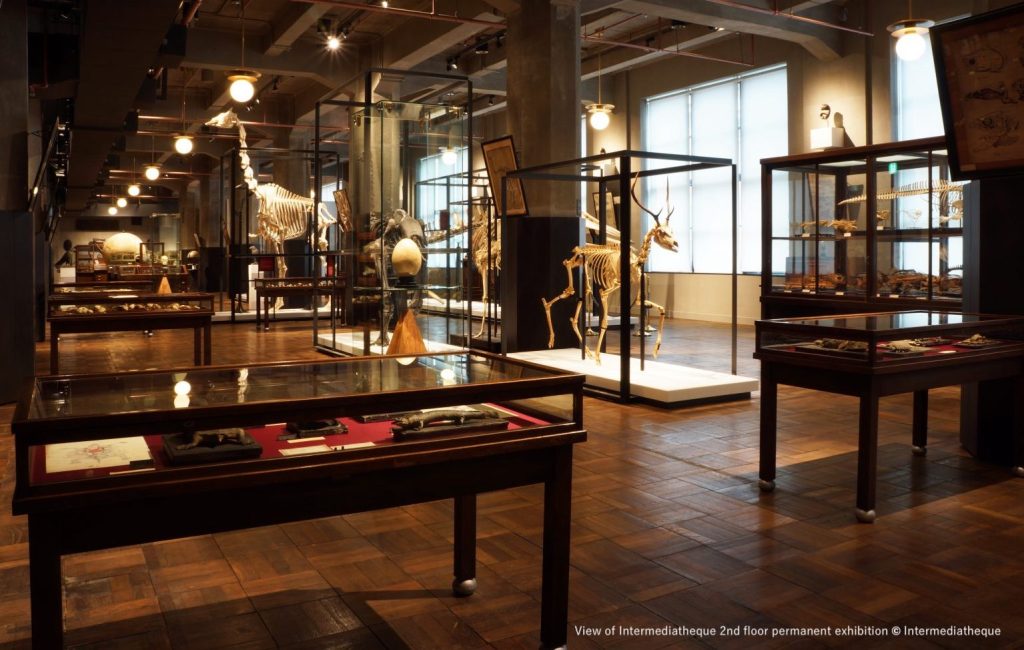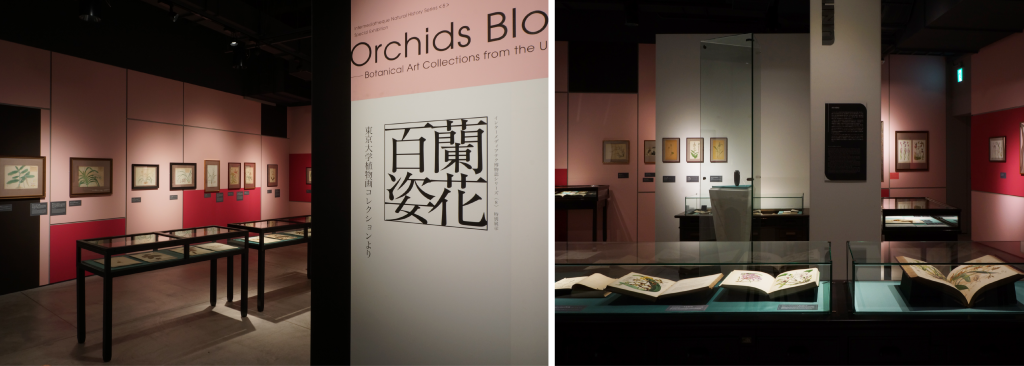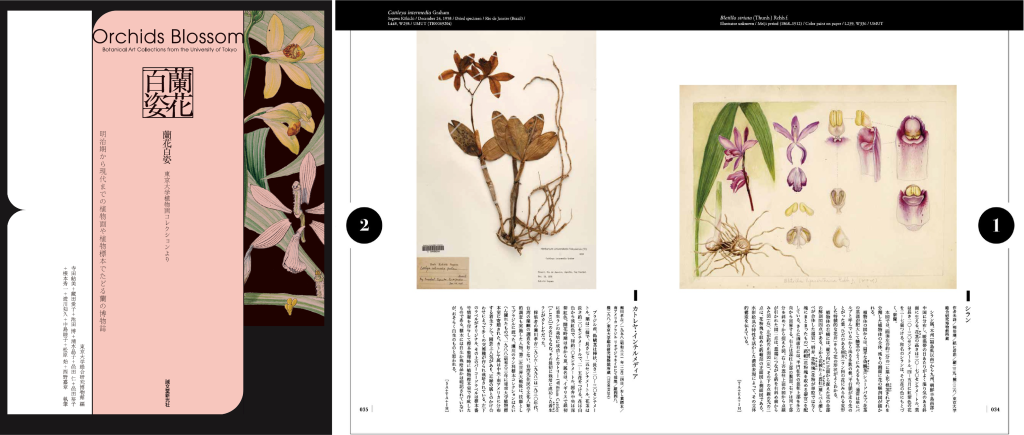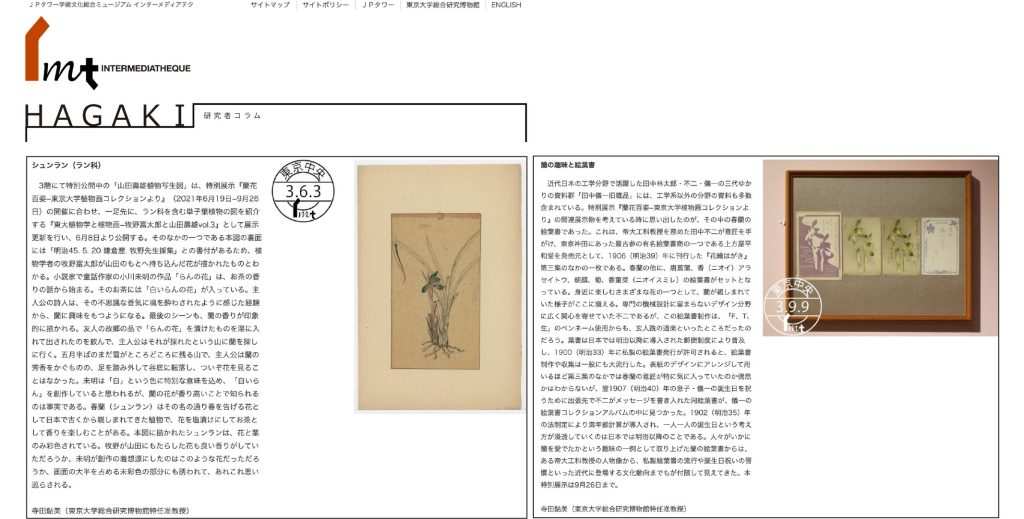
January 3, 2023
Utilizing the Collection –– University Museums Facing the New Museum Definition After the Pandemic
Ayumi TERADA
Project Associate Professor
Intermediatheque Department, The University Museum, the University of Tokyo
The year 2022 was personally marked by two memorable ICOM-related events. First, University Museums and Collections (UMAC) awarded the UMAC Award 2022, which recognizes outstanding efforts related to university museums and collections to The University Museum, the University of Tokyo (Intermediatheque) in its “Orchids Blossom” Project as second place. This project consisted of a special exhibition and book publication highlighting the University of Tokyo’s collection of botanical illustrations, and it was very encouraging to see our activities recognized internationally. The second is the new Museum Definition proposed at the ICOM General Conference Prague 2022, which will be an important milestone not only for me but also for the museum community worldwide. In this article, I would like to write about the experiences I’ve gained through the activities at Intermediatheque, centered around the “Orchids Blossom” Project that I had managed during the pandemic, and my thoughts on the new ICOM Museum Definition and thus the future of university museums.
What is the “Orchids Blossom” Project
From June to September 2021, the Special Exhibition “Orchids Blossom – Botanical Collections from the University of Tokyo” was held at JP Tower Museum INTERMEDIATHEQUE (Tokyo, Marunouchi district), operated by the University Museum, the University of Tokyo (hereafter referred to as UMUT) in collaboration with Japan Post Co. Ltd. (image 1, image 2, and other images in this article provided by UMUT).

UMUT (opened in 1996) is a research and educational institution of the University of Tokyo and is responsible for organizing, storing, researching, and exhibiting interdisciplinary scientific specimens that have been collected and accumulated for the means of research and education since the University’s founding in 1877. Intermediatheque (opened in 2013) is currently one of the off-campus bases for UMUT to cultivate its activities and is located on the 2nd and 3rd floors of KITTE (image 3,) the newly preserved and renovated former Tokyo Central Post Office building, which is representative of Showa modernism architecture. At Intermediatheque, we offer a chance for the general public to see- free of charge- an exhibition that is also an experimentation of design in utilizing the University of Tokyo’s historical heritage of scientific specimens in a contemporary urban space (image 4).

Image 4: View of Intermediatheque 2nd floor permanent exhibition
The Special Exhibition, “Orchids Blossom – Botanical Art Collections from the University of Tokyo,” brought together over 100 botanical illustrations depicting orchids from the University of Tokyo’s collection, along with orchid specimens, orchid illustrations, books, photographs, vases, and flower pots. Academic materials from the collection have rarely been seen by the public. The exhibition attempted to trace the “Naturalis Historia of Orchids,” ranging from the natural history of orchid ecology to the cultural history of the people associated with orchids.
During the winter and spring of 2021, when the preparation for this special exhibition was underway, Tokyo consecutively declared the second and third state of emergency. During which museums went into temporary closure to prevent the spread of the infectious disease. Under these circumstances, in addition to the actual exhibition, a new “Naturalis Historia of Orchids” was in progress to be published via paper to serve as a virtual exhibition for many people, including those who could not visit the site in person. This was the “Orchids Blossom” project.
Ultimately, the temporary closure of Intermediatheque was lifted before the exhibition’s opening. Still, it remained under quasi-emergency measures and the fourth state of emergency until the final day. As we predicted, not many people could come to the exhibition site in person. Although on a positive note, in May 2022, the book of the same title, “Orchids Blossom – Botanical Art Collections from the University of Tokyo,” was published successfully (image 5 and image 6). To distinguish the book from the exhibition site and ascertain its medium, it includes detailed explanations of the illustrations and essays by researchers and illustrators of various fields of science and humanities.

Reviewing and Utilizing the Collection
“Utilizing the potential of the collection” –––– We were keenly aware of and reaffirmed the importance of this objective as we worked on the “Orchids Blossom” project.
Up until now, I have participated in Intermediatheque’s exhibitions and events with immense interest in museology’s research topics on how to creatively utilize collections. For example, my first encounter with botanical illustrations was in the Special Exhibition “The Golden Age of Botanical Art – Flowers from the Collections of the Royal Botanic Gardens, Kew” (2017). In this exhibition, plant specimens from the University of Tokyo’s collection were presented alongside the botanical illustrations on loan from the Kew Botanic Gardens. The theatrical creation project, “Play IMT,” was inspired by the University of Tokyo’s collection at Intermediatheque and created site-specific theatrical performances within the museum space with collaborators, including a director and actors in “Play IMT 4 – Playground” (2016) and “Play IMT 7 – In Between Worlds” (2017) among others. Since 2014, the educational experimentation program for elementary and junior high school students, “Academic Adventure,” has been integrated with training for university students. The university students conduct research on collections that they are interested in at Intermediatheque and become guides for the children as they introduce observations from their perspective.
However, as we proceeded with the “Orchids Blossom” Project, we were forced to completely exclude the option of loaning exhibits from other institutions and working with outside collaborators and university students due to the restrictions set forth by the pandemic. My mindset at the time was evident: let’s focus on what we can do. Alongside my colleagues at UMUT and intramural collaborators at the Botanical Gardens, Graduate School of Science, the University of Tokyo, I delved into searching for materials within the collection at the University of Tokyo that were suitable for the “Naturalis Historia of Orchids” in addition to the botanical illustrations that would be the foundation of this project. In retrospect, it was as if we were going through intensive training in the most basic museum practice to “utilize the potential of our collection.”
Moreover, as a curator, I focused on disseminating information about this collection to reach a wider audience through various means. The Researcher’s Column, “HAGAKI,” on Intermediatheque’s website had a series of articles on the “Orchids Blossom” Project (image 7); our official YouTube channel released a highlights video of the special exhibition; and also, on our Sound Layer application, “onIMT,” “Listening to ‘Orchids Blossom – Botanical Art Collections from the University of Tokyo’” was released so users could enjoy Intermediatheque’s contents through sound. We had intended for all of these tools to be remotely accessible (the trial for the offsite mode for “onIMT” was still ongoing at the time I wrote this article.)

From September to December 2022, Intermediatheque held the Special Presentation, “The Faces of German Medicine.” This exhibition consists of approximately 30 photographic portraits of German teachers from the University of Tokyo’s Faculty of Medicine and materials from the UMUT collection. In this exhibition, we looked back on the historical introduction of German medicine and focused on the German teachers who contributed to the development of modern medicine in Japan. The three photographic portraits of Germain teachers of internal medicine, which were hanging on the walls of the Internal Medicine Auditorium at the University of Tokyo Hospital, are part of the permanent exhibition at Intermediatheque (image 8). The exhibition also sheds light on cultural resources such as stone monuments and statues related to German physicians that remain on the University of Tokyo’s campus today (image 9).

The planning stage of this exhibition was mid-pandemic, but by opening day, we had adjusted to the “new normal” of museum management. This exhibition utilized many materials that were well-known or had a history of being exhibited. This exhibition was an optimum opportunity to showcase what we learned through the “Orchids Blossom” Project – that we can utilize the potential of the collection by reinterpreting and presenting it in alternative ways. Although it is still a modest attempt, analyzing the materials through gender roles and infusing that into the exhibition is also an extension of our endeavors.
“Research” – The Starting Point of Museum Activities
Under the restrictions set forth by the pandemic, we were able to focus on the basis of museum activities, which is to review and reflect upon our own collection, through which I found a renewed appreciation of the breadth, depth, and interest of the University’s interdisciplinary and diverse collections, which was an invaluable experience. I am deeply grateful to the richness of the University of Tokyo’s collection and its predecessors who have made this possible.
The new definition of museums adopted at the ICOM General Conference Prague 2022 is in line with the changing role of museums in today’s society. This is especially true of the keywords “accessible” and “inclusive” used to describe museums, as well as “diversity” and “sustainability,” which were cited as concepts that museums should value.
In addition to these new keywords, my focus was on the basic functions of a museum listed sequentially in the following terms, “research,” “collect,” “conserve,” “interpret,” and “exhibit” tangible and intangible heritage. As “research” is the starting point for museum activities, it is befitting that it comes first. University museums are research and educational institutions which have made “research” the core of their actions. In this respect, the new museum definition is appropriate to the philosophy and goals of university museums. In the future, university museums are expected to play an even more significant role in leading other museums by presenting a model for museum activities that starts with research.
The theme, “Naturalis Historia of Orchids,” launched under the name “Orchids Blossom,” was intended to serve as a framework for developing variations with other institutions since orchids boast a wide global distribution. While planning the exhibition during the pandemic, it was based on and with the hope of continuing activities post-COVID. An overseas development of “Orchids Blossom” has become a real possibility since we connected with the Museum of Contemporary Art, Bogotá of Minuto de Dios University in Columbia, as they were awarded the same second place in the UMAC Award 2022. Columbia has a deep-rooted connection with Orchids, to the extent that its national flower is a type of cattleya (Cattleya trianae). Although we are still developing ideas, we hope to open up new possibilities for interpretation and further utilization of the University of Tokyo’s botanical illustrations collection, such as making comparisons between Japanese and Columbian botanical illustrations. As a member of the university museum, I will strive to contribute to the future development of the museum community facing the new museum definition with an expansive vision.
(Ayumi TERADA)